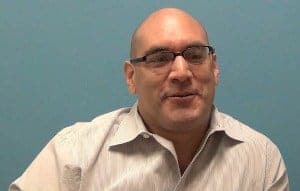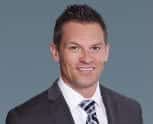How Can Rotator Cuff Surgery Allow a Patient to Live an Active Lifestyle Pain-Free?
- What is a Rotator Cuff Tear?
- How Can a Rotator Cuff Tear be Treated?
- What Are the Results and Recovery After Rotator Cuff Tears?
Mario is extremely passionate about living an active lifestyle. With six dogs at home and a wide-range of athletic hobbies, a torn rotator cuff was an unwelcome slow down to his busy life. Determined to do what it takes to restore his shoulder strength and maintain his physically active life, Mario met with Orlando Orthopaedic Center’s Bradd G. Burhkart, M.D., to discuss a treatment plan.
The two worked as team and came to the conclusion that rotator cuff surgery was the best option to get Mario back to the lifestyle he desired. Six months after his minimally invasive rotator cuff surgery, Mario is back at the gym, running his business, playing with his dogs and enjoying life pain-free.
“The biggest benefit of having had the surgery is that I no longer have pain in my shoulder,” says Mario. “I’ve also been able to regain full range of motion.”
Dr. Burkhart, a board certified orthopaedic surgeon specializing in sports medicine, knee and shoulder surgery at Orlando Orthopaedic Center, established a treatment plan to help Mario rebuild his strength and range of motion making his shoulder better than ever.
Six months after the surgery and with the help of physical therapy, Mario says, “I’ve been able to return to my normal activities like playing basketball and tennis.”
What is a Rotator Cuff Tear?
The rotator cuff is a group of muscles and tendons that surround the shoulder joint. This group of tendons help connect the upper arm to the shoulder blade while stabilizing the shoulder and allowing the shoulder to rotate.
“Since these tendons are key components in the shoulder, a tear can significantly decrease range of motion, cause serious pain and create instability in the shoulder,” says Dr. Burkhart. “If all nonsurgical treatments have failed, surgery is recommended to provide pain relief and improve stability.”
Dr. Burkhart explains that surgery to repair a torn rotator cuff involves reattaching the torn tendon to the head of the humerus (upper arm bone). If the injury did not cause a complete tear, the patient may only need a debridement, or trimming of the damaged tendon. He says tendon tears may occur as a result of overuse or injury. Most rotator cuff tears occur as a result of wear and tear, putting patients over 40 at a greater risk.
“If the rotator cuff tendon is completely torn, surgery is often the only treatment option,” comments Dr. Burkhart.
How Can a Rotator Cuff Tear be Treated?

Mario underwent a minimally invasive rotator cuff surgery with Dr. Burkhart to reduce his shoulder pain and return to the lifestyle he loves.
When creating a recovery plan for a torn rotator cuff, there are both surgical and nonsurgical treatment options.
Nonsurgical treatments for a rotator cuff tear include:
- Steroid injection(s)
- Strengthening exercises and physical therapy
- Anti-inflammatory medications
- Rest the shoulder muscles
If nonsurgical, conservative treatment is unsuccessful, minimally invasive rotator cuff surgery may be required.
“For most patients, strength will not improve without surgery,” says Dr. Burkhart. “Luckily, advances in surgical techniques allow us to repair most rotator cuff tears arthroscopically using the latest minimally invasive techniques.”
Using this method, patients are in surgery for less than an hour and are able to return home the same day as the procedure.
“During surgery, we insert a small camera into the shoulder joint,” explains Dr. Burkhart. “Using the arthroscope and other precision tools, we reattach the torn tendon to the bone using small incisions which make for a faster recovery time with less pain.”
What are the Results and Recovery for Rotator Cuff Tears
Following surgery, a physical therapist will begin slowly introducing flexibility and strengthening exercises to help rebuild shoulder muscles. It may take three to six months for patients to fully recovery from rotator cuff surgery.
Improved shoulder strength and reduced pain occur in a majority of patients after they have fully healed from rotator cuff repair surgery.
“Once healed, most patients regain shoulder strength and range of motion that is the same as what they experienced before their injury,” says Dr. Burkhart.
With the help of rotator cuff surgery, Mario can now enjoy the physically active lifestyle he loves.
“I now am able to move my arm in any direction without discomfort,” says Mario. “The strength in my shoulder has returned, and essentially, I’m back to doing what I used to do before the surgery.”



